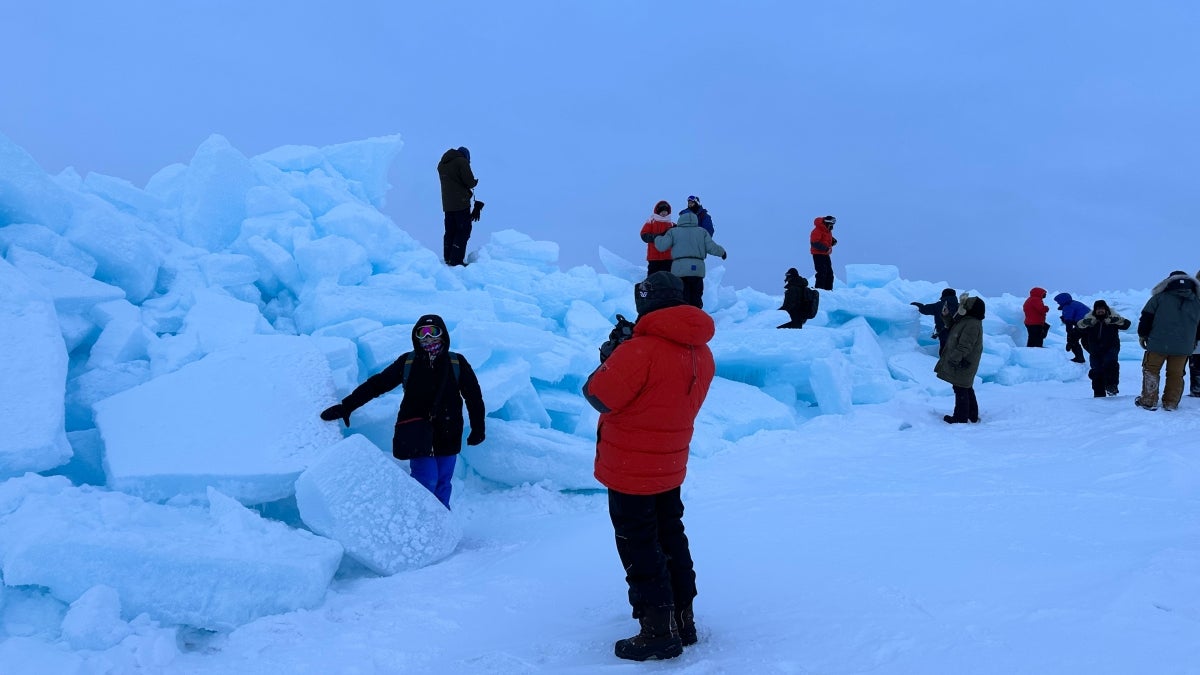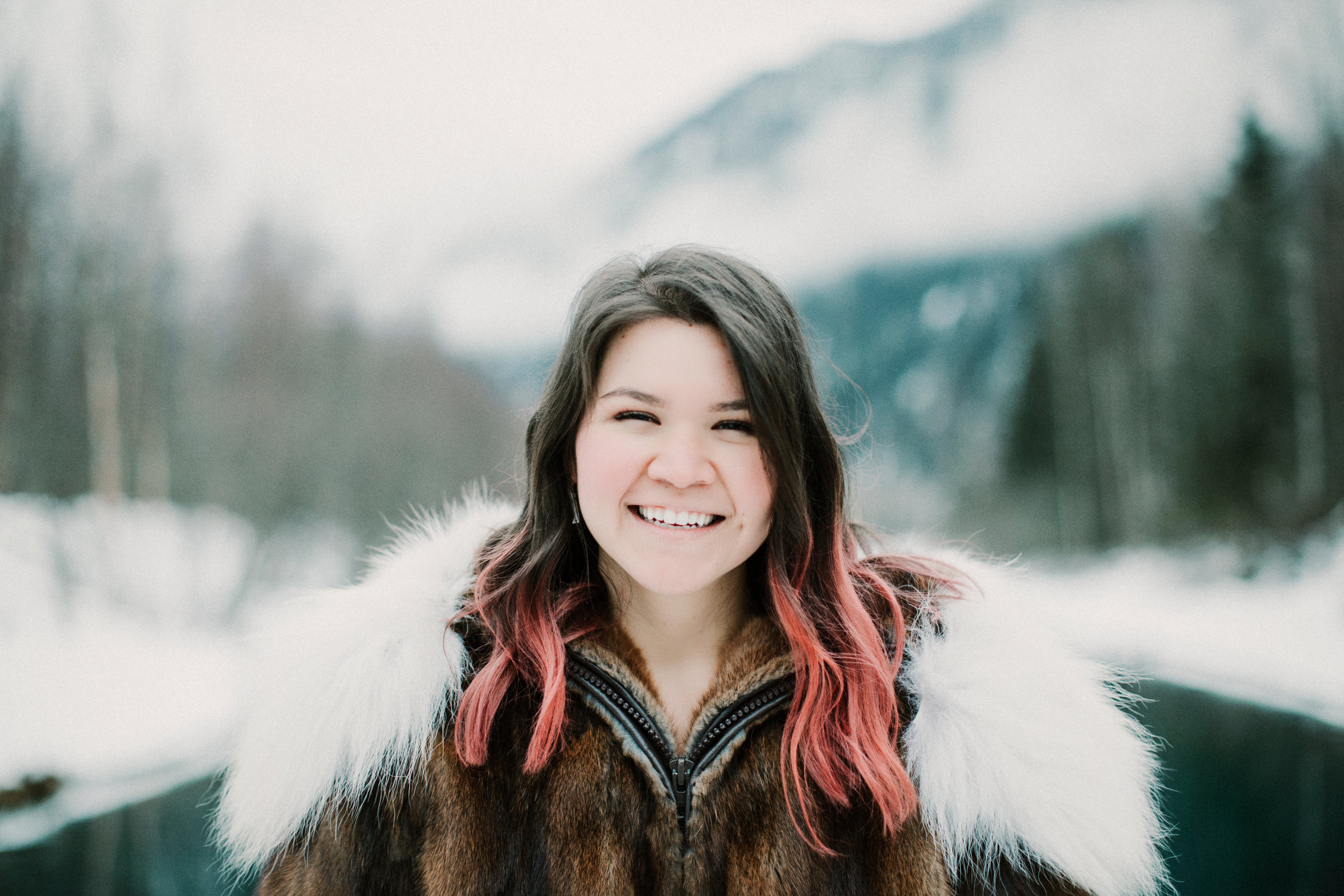Priscilla “Aumaqpaq” Frankson understands the importance of including Indigenous voices and acknowledging the erasure that has been done to Indigenous people when conducting and reading scientific research.
Frankson is a graduate student in the American Indian studies program at Arizona State University and is working on her master's degree in tribal leadership and governance.
Being from Point Hope, Alaska, and a member of the Iñupiat community, Frankson’s priority is to work with the Indigenous communities and local governance.
She hopes to bridge the gap between Western academia and Alaska communities by allowing Indigenous voices to be heard as a member of the ARC-NAV: Arctic Robust Communities-Navigating Adaptation to Variability team, which is researching sea-ice changes in the Arctic.
“For a lot of Western knowledge systems, Indigenous people are seen as people who only live in the past. By making our voice a lot louder and by saying ‘We’ve been here since time immemorial,’ it allows us to take up that space. (Since time immemorial) means that we were always here and we have always done what we needed to do in order to take care of the land and in order for us to be able to live off of it,” Frankson says.
"We know historically that research has done a lot of really bad things to communities," Frankson says. "It is because of these reasons that I want to be a part of this research team, to ensure, with the guidance of my elders, my family and my friends, that this research is done ethically and is beneficial to community members.”
Priscilla “Aumaqpaq” Frankson, graduate student in the American Indian Studies Program at Arizona State University and a member of the ARC-NAV team. Photo courtesy Priscilla “Aumaqpaq” Frankson
The ARC-NAV Project
The ARC-NAV project is composed of a national group of scientists with various expertise taking both a social science and physical science approach to researching sea-ice changes in the Arctic. They are working with Indigenous Arctic communities to find out what matters most to them.
The research will take place in Chukotka and Kamchatka, Russia, as well as Gambell and Point Hope, Alaska.
The $3 million project is being funded by the National Science Foundation and is part of the NSF’s Navigating the New Arctic, says Abigail York, an environmental social and political scientist in the School of Human Evolution and Social Change and principal investigator of the project.
York says her team's top priority is to conduct the research in an ethical way that benefits all communities.
Shauna BurnSilver, an associate professor in the School of Human Evolution and Social Change who is involved with the project, says the initial idea for ARC NAV came out of a 2019 meeting of the Alaska Eskimo Whaling Commission when a frustrated commissioner said, "I am tired of explaining our perspectives to people in Washington, and when they describe our home, I don’t recognize it."
"So a primary goal for the project is to trace how changes to sea-ice landscapes are first perceived and communicated upward by communities to local, regional, national and international governing bodies, and then how well the policies and decisions made by these governing bodies actually address local concerns," BurnSilver says.
The research
While the COVID-19 pandemic put a halt to travel and research for a while, the team was able to explore a subset of research projects.
For example, York conducted and published research about whaling governance, and one of her graduate classes is analyzing news stories about sea ice to see if the articles included Indigenous voices (so far most have not).
Tatiana Degai, an assistant professor at University of Victoria and Indigenous scholar from the Itelmen community in Kamchatka, is researching food sovereignty issues and salmon fisheries governance in Russia, along with colleagues at the ARCTICenter at University of Northern Iowa, because ice and climate change affect salmon, says York.
“We are working with communities and individuals within communities and different groups — for example, hunters, women and people that are using ice in different ways — and we are trying to find out what they care about most,” York says.
Another area of concern is false freeze-upsUniversity of Alaska Fairbanks Research Associate Professor Andy Mahoney, graduate student Kitrea Pacifica Takata-Glushkoff and McGill Professor Bruno Tremblay are leading this research. , where ice appears to be freezing but it's not.
Abigail York near a first-year sea-ice pressure ridge. Photo by Masha Monakhova
Ice is a very important part of whaling for the Iñupiat communities, explains York. In many communities the whales are brought out onto the ice and so it’s not safe to whale if there is no ice. So, with sea-ice change, communities are going to face problems with animals and hunting. Alaskan communities have relied on subsistence hunting for thousands of years.
“People use sea ice for livelihoods, particularly hunting, but they also use it for travel,” York says. “So there are ice roads and other things like that. There are huge safety issues associated with sea-ice breakup. So, for example, you have sea ice because it’s cold and then you have this unusual warming, at least given historic trends, and then you get breakups of the sea ice. It can be quite dangerous.”
“Where I come from, in my community, we are traditionally nomadic people,” Frankson says. “We have moved historically with the food. One season we would be where the caribou are, which we rely heavily on, then in another season we would have the sea mammals, and then there are ducks, so you follow the seasons.”
Masha Monakhova, an environmental social science PhD student at the School of Human Evolution and Social Change, says her area of expertise in previous Arctic projects drew her to work with the ARC-NAV team. Monakhova’s research will focus on the co-production of sea-ice knowledge between Indigenous knowledge holders and Western scientists.
“Evidently, the Arctic is experiencing the most change, and I feel like there's a lot of potential for positive impact that research can make,” Monakhova says. “To me, studying co-production of knowledge is extremely important as it is an essential part of most, if not all, research projects in the Arctic. I am interested in how we can make co-production practices better.”
2023 Alaskan visit
This February, the team traveled to Utqiagvik, Alaska, to meet one another for the first time and visit the community. Frankson says the town is a hub for most of the northern communities in Alaska.
While no data was collected on this trip, the team worked on building community ties and relationships, and the foundation for effective transdisciplinary team science.
“There’s something about being in a place that causes you to rethink things, and that you cannot appreciate just by reading about it,” York says. “I think It’s very difficult to appreciate things without having been to a place and it helps you to understand things more deeply. We can never fully understand things as someone from these communities and from a different culture than our own. But it helps you to connect in ways that you wouldn’t have been able to if you were calling them on the phone.”
For Frankson, the trip was special because she was able to meet extended family members and the other researchers on the team.
“It is a peculiar place to be personally, where I am a researcher who is doing research in my own community, " Frankson says. “I will never forget the traumas that have been put upon both my people and other community members around Alaska, and the whole U.S., due to unethical research practices. So, it helps me feel a little better knowing that those who have never experienced the Arctic the way I have can have that experience and make sure to incorporate it into the work that we will do in ARC-NAV.”
The ARC-NAV team includes Associate Professor Shauna BurnSilver and Professor Marty Anderies with the School of Human Evolution and Social Change and Professor Stephanie Pfirman with the School of Sustainability at Arizona State University, among several others
Top photo: The researchers visit the Arctic ice in Utqiagvik, Alaska. Photo by Masha Monakhova
More Science and technology

Breakthrough copper alloy achieves unprecedented high-temperature performance
A team of researchers from Arizona State University, the U.S. Army Research Laboratory, Lehigh University and Louisiana State University has developed a groundbreaking high-temperature copper alloy…

4 ASU researchers named senior members of the National Academy of Inventors
The National Academy of Inventors recently named four Arizona State University researchers as senior members to the prestigious organization.Professor Qiang Chen and associate professors Matthew…

Transforming Arizona’s highways for a smoother drive
Imagine you’re driving down a smooth stretch of road. Your tires have firm traction. There are no potholes you need to swerve to avoid. Your suspension feels responsive. You’re relaxed and focused on…




